Does chewing gum help grow your jawline?
Regularly chewing gum can strengthen your jaw muscles and create the appearance of a more defined jawline—but only if the gum you chew is sufficiently hard.

The short answer is yes, regularly chewing gum can strengthen your jaw muscles and create the appearance of a more defined jawline—but only if the gum you chew is sufficiently hard. Stick around as we crunch the anatomy, science, and practical how-to of chewing gum to grow your jawline.
Contrary to popular belief, your bone structure isn't the only determinant of your jawline—and even that isn’t set in stone. Instead, muscle groups like the masseter play a far more significant role in shaping your jawline.
In this article, we'll break down the science behind jawline development, share academic research and real-life transformations with photos. Then, we will provide actionable steps for you to begin improving your own jawline.

The science behind jawline development
To understand why you can change your appearance by chewing mastic gum, you need to know how chewing affects your facial muscles and consequently, your jawline.
When we chew, our jaws and teeth work together to break down food into smaller pieces. This process is called mastication, and it's essential for our bodies to extract the nutrients we need from the food we eat.
Just as proportionate & well developed muscles enhance the physical appeal of our bodies, the same is true of our facial appearance.


Just as proportionate & well developed muscles enhance the physical appeal of our bodies, the same is true of our facial appearance. Photos by Getty Images, Unknown.
Our paleolithic ancestors spent several hours per day chewing. By gnawing on roots, cracking nuts, and tearing off rhinoceros meat from the bone, Stone Age Man naturally developed an enviable jawline. The average modern diet, on the other hand, is full of soft foods, providing you with very few opportunities to work out your jaw.
Though improving your diet with tougher foods like steaks and rye bread can help, there's a simpler way to exercise your facial muscles and reclaim the chiseled jawline of your ancestors: mastic gum.
Masseter muscle’s crucial role in jawline definition
Chewing involves four main muscles: the masseter, temporalis, lateral and medial pterygoid, and buccinator muscles. They collaboratively generate the force and movement needed for effective chewing.
Among these four muscles, the masseter muscle has the most impact on the aesthetics of the lower jaw due to its role in jaw hypertrophy.1 Located on the jaw's edge, the masseter muscles operate jaw movement and guide the opening and closing of the lower jawbone.
One of the most effective ways to increase the size of the masseter muscle is by chewing hard substances, with mastic gum being a convenient and effective choice.
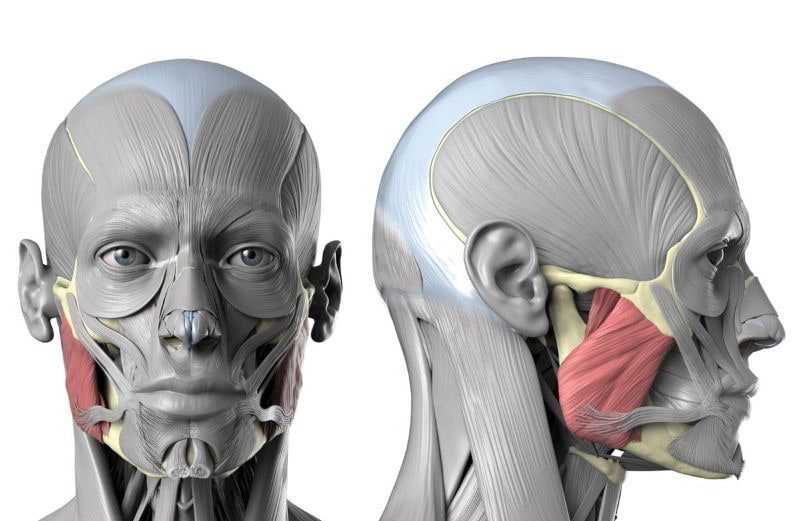

Think of Brad Pitt, who has notably well-developed masseter muscles. Photos by Anatomy Next, Matt Baron.
Examples of jaw muscle growth
Numerous medical studies provide robust evidence that the masseter muscle is capable of significant growth, and can drastically transform the jawline's appearance.
Interestingly, the strongest examples of this muscle growth are often found in individuals with jaw habits such as bruxism and grinding, which can result in excessive masseter hypertrophy.12 Although these cases are typically undesirable due to the negative effects of such habits, they highlight the masseter muscle's remarkable adaptability and growth potential in response to resistance training.
One way to illustrate this is by observing the effects of botox injections on the masseter muscles. These injections paralyze and consequently shrink the muscles, resulting in a visibly altered face shape.23 The transformation is striking, underscoring the crucial role of the masseter muscle in determining the appearance of our face.
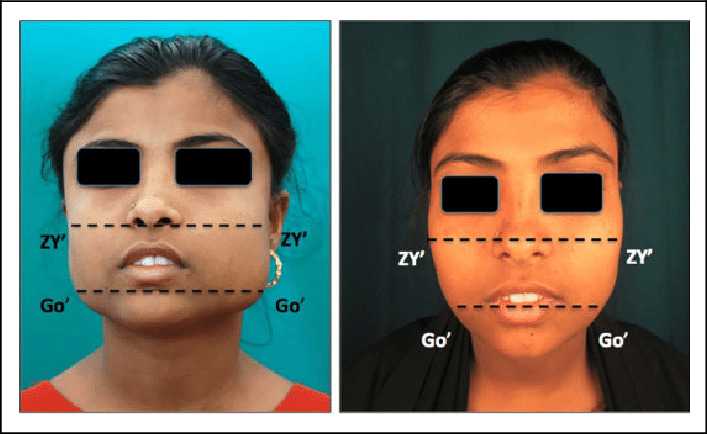
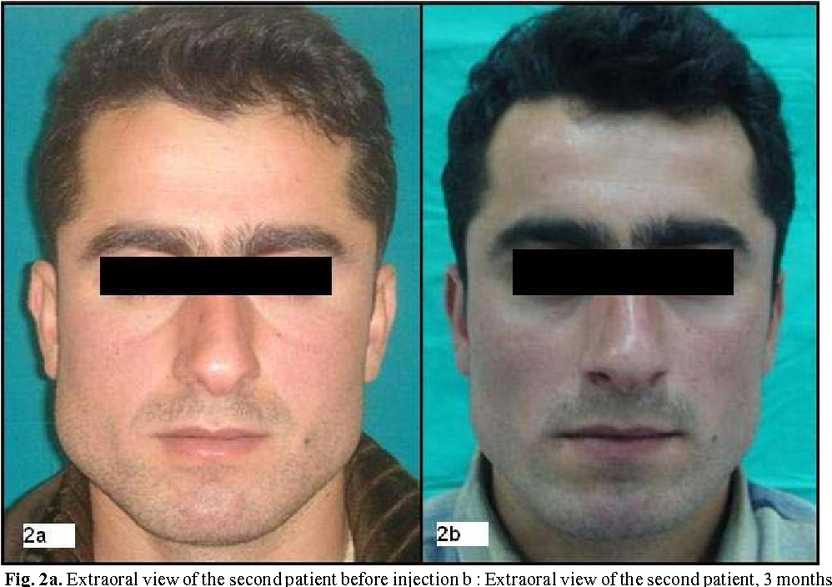
Photos by Professor Venkatesh Anehosur, Professor Burcu Baş.
But the benefits of jaw resistance training extend beyond just muscle growth. It also triggers bone remodeling. How does that work? That's the fascinating subject we're going to explore next.
Can chewing hard things thicken the jawbone?
Julius Wolff, a German anatomist, formulated Wolff's Law, stating that bones adapt to the loads under which they are placed.4 This adaptation leads to enhanced strength to resist increased loads.
Analogous principles can be seen in sports such as Muay Thai, where athletes repeatedly strike their shins to increase their resistance, leading to denser and stronger bones.
Similarly, our mandible, or the lower jawbone, is responsive to the stimuli it encounters. Consistent pressure applied through rigorous chewing can lead to the mandible adapting over time. Unlike the shin's response to repeated impacts, it doesn’t appear as though the jawbone's adaptation involves microfractures or ossification, but rather a different form of remodeling suited to its function.

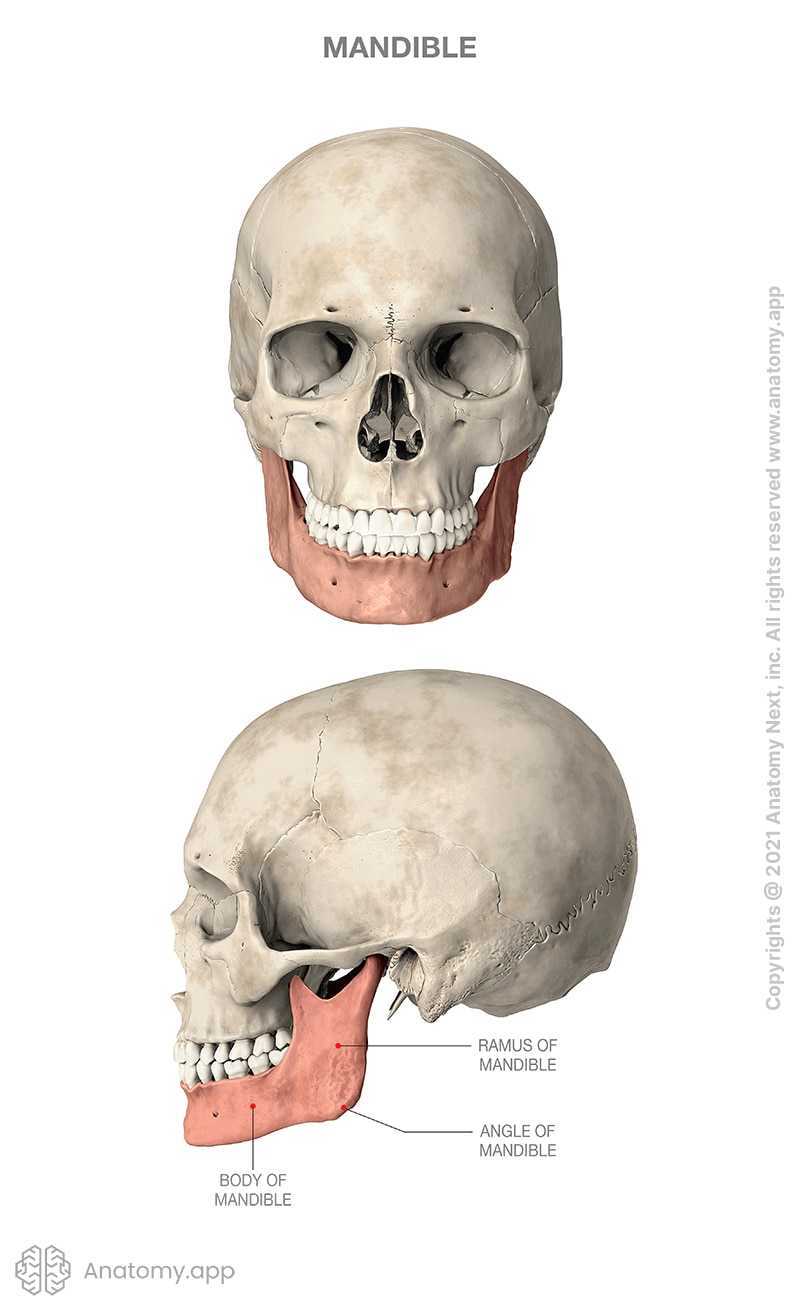
Photos by Nick Soland and Anatomy Next.
Case studies of mandibular bone remodeling
Scientific studies, particularly those involving rats, have provided valuable insights into the jawbone's potential for growth under stress. A comprehensive review in the International Journal of Environmental Research and Public Health analyzed the effects of chewing hard substances on the jawbone by examining hundreds of rat studies.
In these studies, rats were divided into two groups: one group was fed a hard pelletized diet, and the other a soft powdered version of the same diet. The studies covered a wide age range from weanlings to adults, and the testing periods spanned from 1 to 7 months.
Uniformly across these studies, the group consuming the hard diet showed significant mandibular growth, exhibiting a larger, thicker, and more squared jaw compared to the group that was fed a soft diet.5
Moreover, there was a direct correlation between the testing period's duration and the extent of bone growth, indicating that the effects become more pronounced over time.5
Rats that consumed hard diets were found to exhibit an increase inbigonial width, corpus height, condylar depth, condylar base inclination, condylar process inclination, mandibular plane inclination, height and length of angular process, mandibular body height, depth of antegonial notch, growth rate in the gonial angle, angular process convexity and height of condylar process. It was also noted that mandibular depth, mandibular height, ramus angle and angle between the angular process and mandibular plane were decreased in rats that were fed with a hard diet.
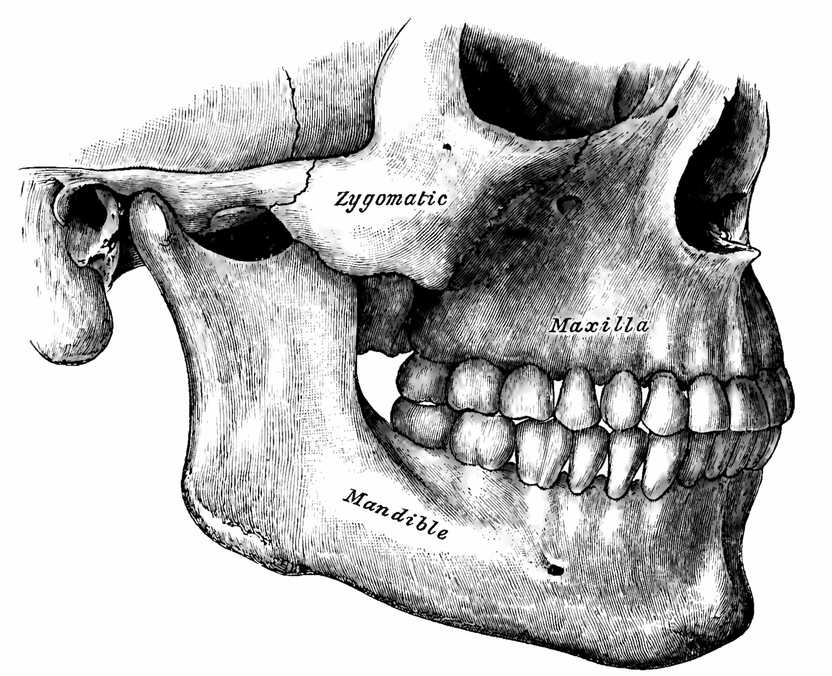
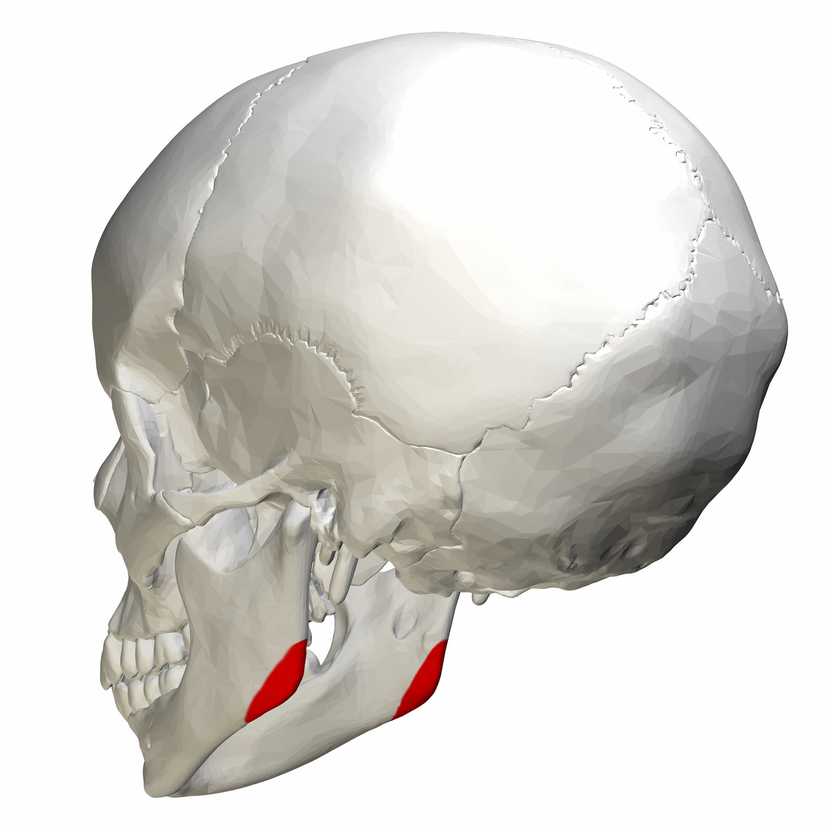
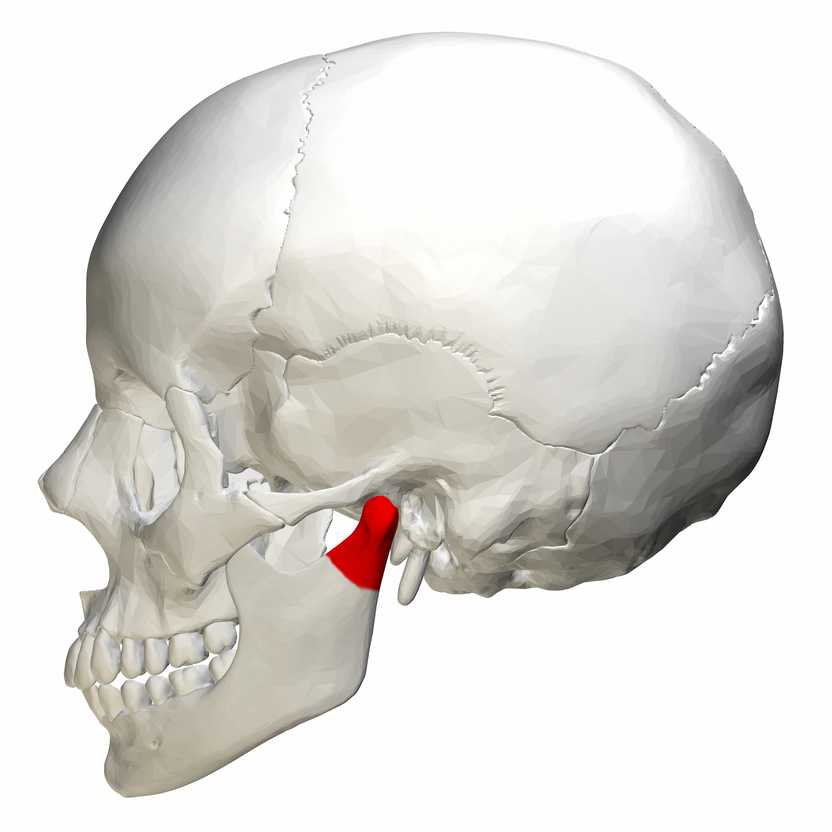
Anatomical models of the maxilla bone, the mandible angle, and the condyloid process. By Henry Vandyke Carter and BodyParts3D.
More jawbone studies
Another key study examined the interplay between hormonal factors and bone growth, specifically the influence of hard chewing on the release of growth factors.6
This two-month rat study yielded evidence that hard chewing significantly stimulates the secretion of crucial growth factors—OPG, RANKL, and MGF. These growth factors are instrumental in promoting bone growth and repair.
The study underscores the potential benefits of rigorous chewing activities in fostering bone health and regeneration.6
Rats are frequently used as subjects in these studies due to their genetic similarity and comparable growth patterns to humans.5 Therefore, the results derived from these rat studies provide valuable insights into the mandible's potential for growth in humans.
Why mastic gum is important
With the established link between rigorous chewing and an improved jawline, we can now identify the role of mastic gum in this process.
Mastic gum's durable, malleable texture makes it ideal for extended periods of chewing. It's convenient, portable, naturally sugar-free, and adaptable to individual chewing preferences.
Regularly chewing mastic gum provides a form of resistance exercise targeting the chewing muscles, while also stimulating the mandible to enhance its density.
Exploring mastic gum’s beneficial properties
Mastic gum, like our own Greco Gum droplets and nuggets, boasts health benefits that extend beyond providing resistance for chewing exercises.
Mastic has been demonstrated in multiple rat studies to stimulate bone remodeling.7 It also contains unique resin compounds, triterpenoid terpenes, acclaimed for their substantial impact on bone mineral density.8
Experiments involving the effects of these terpenes have shown compelling results: extended femur bone length, increased bone mineral density (BMD), and enhanced biomechanical strength.7 Even more strikingly, a study demonstrated the ability of terpenes to fully regenerate lost bone mass in osteopenic rats, thereby indicating their potential bone-building properties.7
Beyond bone health, mastic gum contains anti-inflammatory, antimicrobial, and antiviral properties, providing a protective shield against gingivitis and tooth decay.9
To summarize, mastic gum serves multiple purposes. It not only encourages habitual, rigorous chewing but also promotes jawbone remodeling and supports overall oral health owing to the beneficial properties of mastic.879
Read more about the other health benefits in our comprehensive 18 benefits of mastic gum backed by research write-up. It may just be the most complete resource on this topic available online.
How to chew mastic gum for jawline enhancement
As you begin using mastic gum to enhance your jawline, remember to start lightly and gradually increase your chewing intensity. This mindful approach will prevent overexertion and ensure a positive, effective experience. Let's dive into the best practices for using mastic gum for jawline development.
Begin gradually: Start with a small piece of mastic gum to avoid straining your jaw.
Control duration: Initially, limit chewing to short periods, gradually extending them to prevent overexertion.
Maintain tongue posture: Keep your tongue pressed against your palate while chewing to evenly distribute force and lessen the strain on your jaw.
Pay close attention to your jaw during and after chewing. Any discomfort, pain, or fatigue could indicate overexertion. If these symptoms persist or worsen, lessen your chewing time or seek professional health advice (either a dentist or myofunctional therapist).
In our humble opinion, the best source of mastic gum—unless you’re in Greece—comes from us at Greco Gum. It is fresh, hard, and one tin contains enough droplets or nuggets to last 4–6 weeks with daily chewing.
Get yours here:
This article originally appeared online in 2023; it was most recently updated on February 13, 2024, to include current information.
References
Footnotes
-
Fedorowicz, Z., Laroche, L., & Goulet, J. (2013). Masseter muscle hypertrophy: A review of the literature. Journal of Oral Rehabilitation, 40(7), 539-548. pubmed.ncbi.nlm.nih.gov ↩ ↩2
-
Anehosur, V., Mehra, A., & Kumar, N. (2020). Management of masseter muscle hypertrophy and role of adjunctive surgical procedures. Craniomaxillofacial Trauma & Reconstruction, 13(2), 137-144. journals.sagepub.com ↩ ↩2
-
Braun, S., & Isac, G. (2002). Treatment of masseteric hypertrophy with botulinum toxin: a report of two cases. Journal of Oral and Maxillofacial Surgery, 60(10), 1185-1188. pubmed.ncbi.nlm.nih.gov ↩
-
Frost, H. M. (2003). Wolff's Law and bone's structural adaptations to mechanical usage: an overview for clinicians. The Iowa Orthopaedic Journal, 23, 82-87. pubmed.ncbi.nlm.nih.gov ↩
-
Oliveira, L. R., & Costa, F. M. (2018). Impact of diet consistency on the mandibular morphology: A systematic review of studies on rat models. International Journal of Environmental Research and Public Health, 15(12), 2706. mdpi.com ↩ ↩2 ↩3
-
Liu, Z., Li, J., Ma, J., Guo, C., Hu, C., Wang, Y., & Zhou, Y. (2017). Effect of enhanced masticatory force on OPG, RANKL and MGF in alveolar bone of ovariectomized rats. Archives of Oral Biology, 82, 1-7.pubmed.ncbi.nlm.nih.gov ↩ ↩2
-
Chattopadhyay, N., Mandal, S., & Das, S. (2017). Guava fruit extract and its triterpene constituents have osteoanabolic effect: Stimulation of osteoblast differentiation by activation of mitochondrial respiration via the Wnt/β-catenin signaling. Journal of Nutritional Biochemistry, 44, 22-34. doi:10.1016/j.jnutbio.2017.02.011 ↩ ↩2 ↩3 ↩4
-
Papadakis, I. G., Patsouras, A., Chrousos, G. P., Tsanaktsidis, I., & Manios, E. N. (2021). Chios mastic gum consumption has a protective effect on ovariectomy-induced bone loss in rats. Preventive Nutrition and Food Science, 26(2), 166-176. doi:10.3746/pnf.2021.26.2.166 ↩ ↩2
-
Ríos, J., & Romero, J. (2010). Effects of triterpenes on the immune system. Frontiers in Immunology, 1(1), 17. doi:10.3389/fimmu.2010.00017 ↩ ↩2
